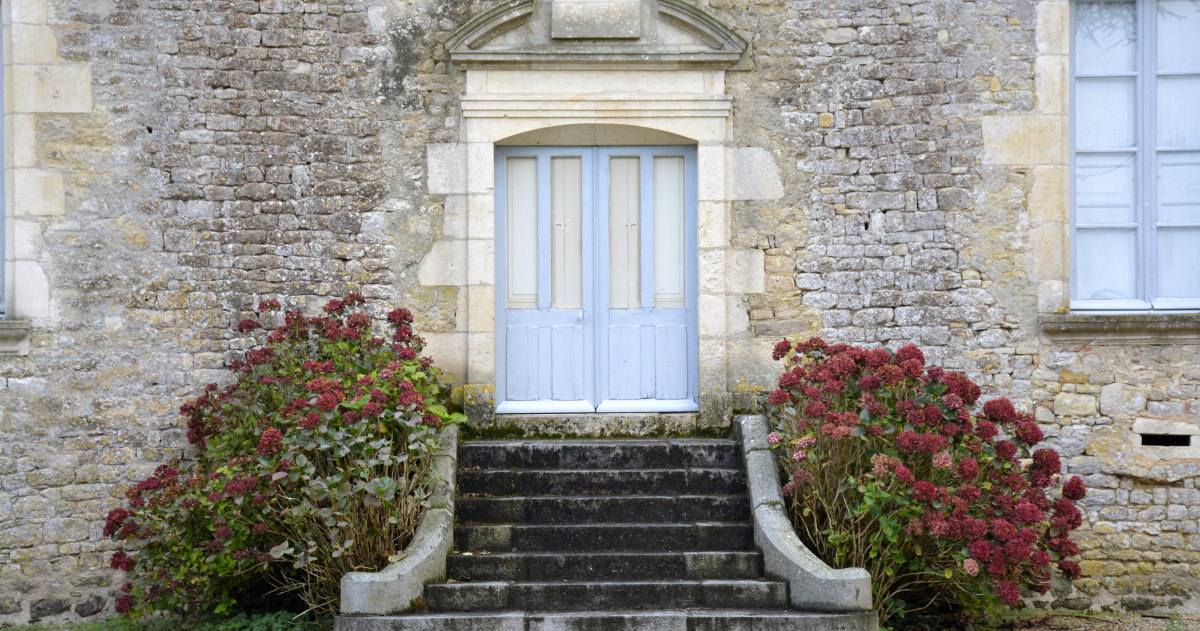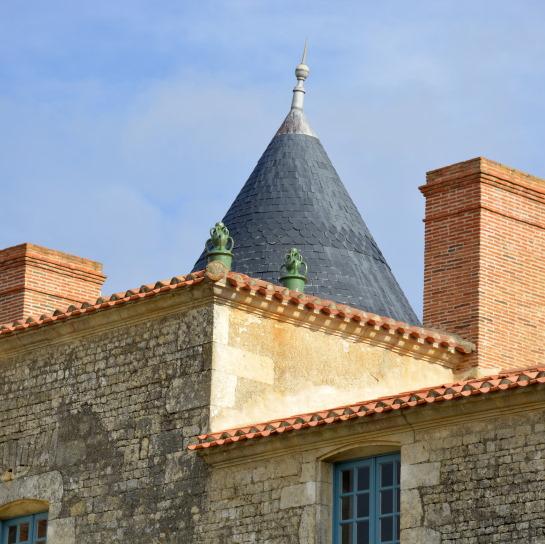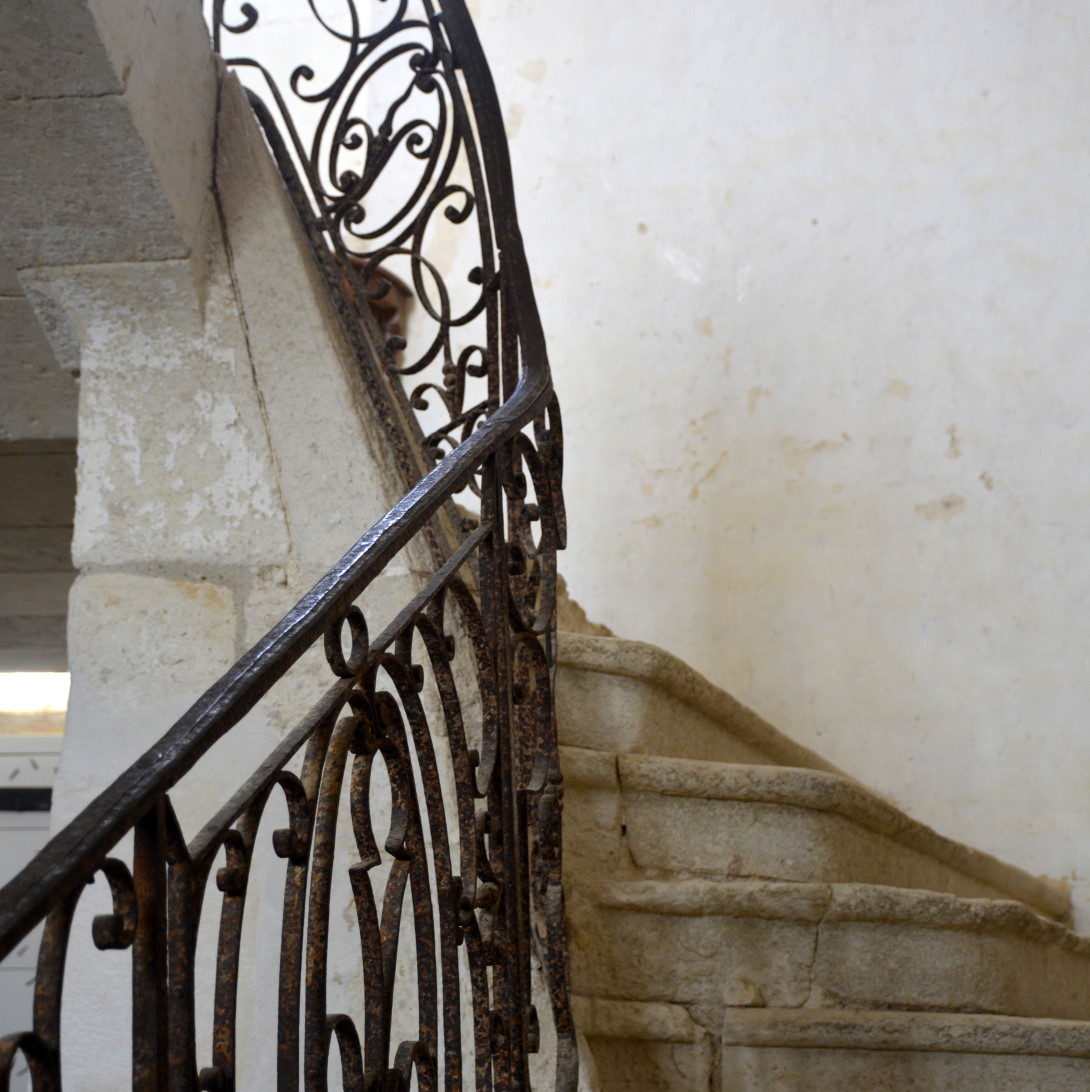
Our 2020 Journées Patrimoine adventure is our 2021 recommendation!
What are the Journées Européennes du Patrimoine or European Heritage days? – Created by the Ministry of Culture in 1984, national museums and historic monuments are opened to the public for free or at a reduced rate on the third weekend of September every year. All weekend long, well-organized guided tours, animated demonstrations of old techniques, concerts, theatrical performances, and more, shed a special light on French heritage.
We are especially intrigued by the notion that sometimes we (the people) are given access to historic homes that are not normally open to the public. It is a requirement by the French government in exchange for receiving funding to help restoration.
The more we learn about the concept of owning an historic dwelling, the more fascinated we are by learning what the owners go through in terms of the experience of living in a centuries-old home or abbey; and the process of restoration which can be incredibly time consuming and expensive.
We have learned it is better to purchase a property that has not been classified as historic yet, make essential restorations (like underfloor heating combined with new floor tiles custom made after the original if a template can be found etc), and then having the building classified. Because once it is classified, restoration is bound by a strict set of rules and bureaucracy.
Supporting patrimony – The first year we participated in JEdP, we were interested in how much money we could save! Our opinion on that has changed. Now that we have a better understanding of patrimony, we understand the importance of a small contribution. We hope you will too! We must treasure these... treasures.
Route Planning and Preparation – We schedule our time and drive conservatively in a circle. Each year is different because each year there are new things to see. For practical reasons, we also stick to one area rather than venturing across the entire Vendée. We map things out because of scheduling conflicts between venues... not everything is open at the same time or there is a set guided tour schedule. It's important to map things out ahead of time and to make notes.
Day 1 On the planning, I had four locations: Château de la Chevallerie, Château and Colombier de Bessay, Château de la Cantaudière, and Château de l'Ilôt-les-Tours. Because of spending too much time in the village of Moutiers-les-Mauxfaits, we didn't make it to l'Ilôt-les-Tours as our timing didn't work out anymore.
Total distance day 1:
Planned: 156km
Actual tour was 152km (94mi) or 2.30hrs of driving time
Day 2 took us to Château de la Flocellière and to Château de l'Hermenault
Total distance day 2:
97km (60mi) or 1hrs 40min of driving time
Total distance: 249km (154mi)
Total fuel used: not even 1/2 a tank
Journées Patrimoine entry fees (2 ppl): under €30

Knights Templar in the Vendée
Originally an encampment of the Celtic tribe 'Les Pictons', it was the second half of the XIIth century and the building of a Knights Templar commandery that gave this beautiful castle its name of "la Chevallerie".
During the Hundred Years War, the castle was a Seigneurie at times possession of the French Crown, and at times that of the English Crown. At the end of the XIVth century, La Chevallerie was seized as "Hostel" of the President of the Parliament of Paris, Pierre Boschet , Keeper of the Seals and Minister of Kings Charles V and Charles VI. As such in the next centuries, the location became strategic in negotiations between Catholics and Protestants.
In the XVIIth century la Chevallerie was in the possession of the powerful Mauclerc family, who were Protestant. But they will be ruined during the last wars of Religion and victim of the personal and partisan vengeance of Richelieu, the bishop of Luçon responsible for the destruction of many a medieval stronghold still standing in the Vendée.
After the destruction during the wars of religion, it was the Babin family who blew new life into the castle, giving it its current appearance of neo-classical architecture with homogeneity and symmetry of the proportions.
The revolution and housing of Vendée refugees by General Bar, followed by the dismantling into two completely independent agricultural entities, and consequent abandonment were not kind to La Chevallerie.
Fortunately the castle was rescued in 2004 by Eugénie and Pascal Maison, who are restoring La Chevallerie to high standards. During a tour it is impossible not to be glued to Mr. Maison's passion for the project, and his amazement at the discovery of engineering and construction from the middle ages through the 18th century.
Château de La Chevallerie is now a beautiful holiday and wedding destination in the Vendée.
Open – Tours are possible website
Tip – book a group tour with high tea!
Address – Château de la Chevallerie
85400 Saint Gemme la Plaine
GPS coordinates – 46° 25′ 21″ N, 1° 06′ 52″ W
Nearby Sightseeing – Chateau et Colombier de Bessay; Cathedral and cloister of Luçon
Images – by inthevendee.com







Largest pigeonnière in France
Built on an ancient feudal mound anno 1577, this lovely castle is a gem worth visiting. Tucked away behind ancient walls in a tiny village, the history of this chateau is linked to the famous Bessay family, of whom the most famous descendent was doubtlessly Giron de Bessay, a personal friend to Henry de Navarre, King of France from 1589 to 1610. (Henry de Navarre was the first monarch of France from the House of Bourbon, assassinated in 1610 by François Ravaillac, and was succeeded by his son Louis XIII.)
Through this friendship, the Bessay family was powerful throughout the region and in France.
The castle is not only famous for its ancestor with royal connections though. While its façade is on first glance rather sober in quality, the castle with neo-classical features of the 17th and 18th centuries is flanked by two Renaissance towers.
The Henri IV Tower features restored rooms, monumental fireplaces, magnificent machicolation walkway, the domed roof structure with open lantern and the grand staircase of honor, such are the aspects of this beautiful Renaissance castle.
Also on the grounds is the largest pigeon house in the Pays de la Loire region. Likely to have been constructed on the remains of a medieval tower at the end of the XCIth century, the tower houses no less than 3200 boulins or pigeon niches.
Purchased as a ruin by General Richou and his wife in 1987, they have been restoring Château de Bessay to its former glory. The Colombier (pigeon house) was classified as a historic monument in 1990, though other parts of the castle were classified much earlier.
Open – Monday to Saturday from 9h00 - 19h00 BY RESERVATION ONLY website
Tip – picnic spot!
Address – 18 Rue Principale, 85320 Bessay
GPS coordinates – 46° 32′ 18″ N, 1° 09′ 11″ W
Nearby Sightseeing – Château de la Chevallerie; Cathedral and cloister of Luçon
Images – by inthevendee.com










Rising from its moat
Built in 1578 as evidenced by an inscription in one of the mantels, this gorgeous chateau was initially a small fortress with four towers, ramparts and a drawbridge.
In 1615, the property belonged to Maximilien de Béthune, Baron de Rosny, Duke of Sully, illustrious Minister to Henri IV of France.
At the time, Sully was governor of Poitou. His son-in-law, the Duke Henri de Rohan, sold the Cantaudière on July 13, 1620 to André Legeay, Provost General of Poitou, who was abolished by Henri IV in 1608 for having captured the famous bandit Guillery who was devastating the region.
The property was bought in 1855 by Charles-Joseph Duchaine, an ancestor of the current owner Laurence Guibert who just saw the home through four years of restoration. Listed as a historical monument in 1978, the castle is now flanked by three towers and surrounded by a moat.
Open – Journées du Patrimoine, 3rd weekend of September
Tip – Participate in the rando (hike) with meals and visit to the chateau, hopefully they will organise it again in 2019. Sadly this year's was cancelled due to lack of sign-ups.
Address – Château de la Cantaudière, 85540 Moutiers-les-Mauxfaits
GPS coordinates – 46° 29′ 22″ N, 1° 26′ 12″ W
Nearby sightseeing – the beautiful village of Mareuil-sur-Lay is worth visiting, and there are Vendée wineries nearby
Images by inthevendee.com






Flower in the Sky
This beautiful Renaissance home and chambre d'hotes bears the transformation of centuries. The original five-sided Medieval castle ruin has been cleverly turned into a very lovely courtyard garden with views across the rolling hills of the Vendée bocage. It is but one corner of a 30ha park where you can visit May through October.
Overlooking the 11th century castle ruin are both the 17th century castle as well as the restored 13th century keep (donjon) featuring a unique cantilevered staircase which was added in the XVth century.
The very first structure that stood here was probably a motte or wooden castle.
Being a 'lordship' or seigneurie, the family that lived here were protestants and heavily involved in the religious wars that devastated the Vendée. In the 16th century they became connected to the de Maillé-Brézé family (of our favorite Loire valley castle Château de Brézé) by marriage.
But perhaps the more intriguing story that lives within the castle walls is that of the Marquis de la Flocellière, Jacques de Maillé, who kidnapped the Scottish damsel Elisabeth Hamilton at the court of King Louis XIII. They were married in 1616 but had no children and eventually the lordship went back to the Surgères family that owned it in the 13th century. Largely destroyed in the Vendée wars toward the end of the 18th, the 'newer' castle was reconstructed in the 19th century only to fall in disrepair again later.
The current owners (Patrice and Erika Vignial) have lovingly renovated the castle over a 30 year-period, including a bed & breakfast and a wedding location. Luckily for us, they also created a spectacular park where you can take a stroll. Flocellière means 'flower in the sky'.
Open – the beautiful park is accessible May to October from 14h00 to 18h00, for a small fee. Private tours are also available.
NOTE – reservations are necessary. Make them here and for an interior guided tour (incl. groups) please call 0251572203
Address – 30 Rue du Château, 85700 La Flocellière
GPS coordinates – 46° 50′ 06″ nord, 0° 51′ 42″ ouest enter your location
Nearby Sightseeing – Château and windmills in Pouzauges
Ideal for – gardeners, art lovers (sculpture), history, and photography lovers
Images – by inthevendee











France's popular president
This chateau has been in the family of historical figure Chevalier Pierre Godard des Breuze, Colonel of the Empire, who bought it in 1806. The castle itself is not open to the public, but the gardens are, and we highly recommend a visit in summer! Developed in the XVIIth - XVIIIth centuries, four grass terraces of 110 m long and edged by beautiful plane trees*, step down to a remarkable canal sourced from the river Longèves.
The canal, developed through a clever network of pipes placed on a geological fault line separating sandstone and shale sub-soil, is centered on the water mirror and fed by water resurgences from the bottom of the park. The castle is mirrored in the water. The Longèves canal is bordered by a pone stone, a lavoir, and a water mill, ending in a large circular pool that was used for horses.
The château, which is located on a promontory, began its life as a Gallo-Roman villa, and at the beginning of the Xth century was a fortified priory. In the XIVth century it was part of the Maillezais Abbey serving as the summer residence of the bishops of Maillezais and La Rochelle. During the age of the Renaissance, Monseigneur d'Estissac built the first castle here. His secretary Rabelais sent the plane trees from Rome. They are dubbed the Rabelais trees*.
This Renaissance castle was severely damaged during the wars of religion. Only the tower remains from that period, and a former defensive tower was turned into a beautiful pigeonnière (dovecote). The castle was restored in the XVIIth century by the new bishop of La Rochelle, Monseigneur de Sully Béthune. The arcaded outbuildings, the barn, the terraces and the park date from this period.
The enormous barn by the hand of famous Renaissance architect and writer Philibert de l'Orme (or Delorme) retains its original 17th century framework and should not be missed in your Vendée sightseeing excursions.
In the XVIIIth century Monseigneur de Crussol d'Uzès built the 'Logis des Dames' in the Rochelle style while the park continued to be developped. During the Revolution, which had become a national asset, the bishops' residence was bought by a shipowner from La Rochelle, Daniel Garesché, who had the Renaissance castle demolished.
Influenced by his in-laws and his function being responsible for the jurisdiction of the direction of Vendée fortifications, Pierre Godard des Breuze, bought the castle in 1806 and died here. The property has remained in the same family ever since.
Open – see website for June to Sept schedule but you can always see the canal with lavoir, watermill and horse pond from the street
Tickets – €5 adults (children <12 free)
Address – rue du Château,
85570 L' HERMENAULT
GPS coordinates – 46.518697, -0.898290; enter your location
Nearby – Fontenay-le-Comte, Vouvant and the Mervent forest
Images – by inthevendee








We HEART the European Heritage days in the Vendée
As we compile the list for Journées Patrimoine year after year since 2018, it is stunning just how many treasures there are to explore in the Vendee, historic gems we had no clue existed and to meet the brave souls that take it upon themselves to ensure the future of patrimony. Let's be honest, one has to possess equal measures of passion for history, and crazy, to take on the care for a ruined castle or abbey.
We love that people take full advantage of the event to travel locally. That much driving around in just two days does take its toll. Truth is, we need a couple of days to recover, but oh, what a joy it is to discover picturesque villages, meander down narrow roads up and down the countryside, catching the odd glimpse of dolmen and menhirs in freshly harvested fields.
Year after year, new efforts are made to make this weekend special. We owe Vendee Tourisme, the owners of these private homes/chateaux/abbeys, and the village volunteers a huge debt of gratitude.
Each year, we are very happy to have made the most of the third weekend in September! It feeds our adventurous spirit, helps our learning of the French language as we listen to impassioned tour guides, you run into the same people on both days, so it's a good opportunity for making friends and to further integration into the community.
Where will we run into YOU in 2021?


